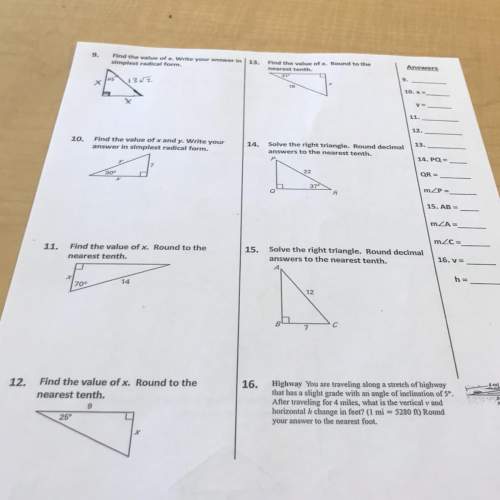
Mathematics, 28.03.2021 03:40 abolton04
Carlos notices he usually pushes the clear button on his calculator more than once each time he wants to clear the screen. Carlos’ teacher suggests that about 20% of all students have this habit, but Carlos thinks it might be greater. He randomly selects 100 students in his school and finds that 25 of them push the clear button more than once. To determine if these data provide convincing evidence that the proportion of students who push the clear button more than once is greater than 20%, 100 trials of a simulation are conducted. Carlos is testing the hypotheses: H0: p = 20% and Ha: p > 20%, where p = the true proportion of students who push the clear button more than once. Based on the results of the simulation, what is the estimate of the P-value of the test?
11%
17%
20%
25%

Answers: 2


Another question on Mathematics

Mathematics, 21.06.2019 15:00
Write a corresponding real world problem to represent 2x - 125=400
Answers: 1

Mathematics, 21.06.2019 18:10
An initial investment of $100 is now valued at $150. the annual interest rate is 5%, compounded continuously. the equation 100e0.05t = 150 represents the situation, where t is the number of years the money has been invested. about how long has the money been invested? use your calculator and round to the nearest whole number. years
Answers: 3

Mathematics, 21.06.2019 23:00
1. an economy consists of three workers: larry, moe, and curly. each works 10 hours a day and can produce two services: mowing lawns and washing cars. in an hour, larry can either mow one lawn or wash one car; moe can either mow one lawn or wash two cars; and curly can either mow two lawns or wash one car. a. calculate how much of each service is produced under the following circumstances: a. all three spend all their time mowing lawns. b. all three spend all their time washing cars. c. all three spend half their time on each activity d. larry spends half of his time on each activity, while moe only washes cars and curly only mows lawns b. using your answers to part a, draw a production possibilities frontier and label points a, b, c, and d on your graph. explain why the production possibilities frontier has the shape it does. c. are any of the allocations calculated in part a inefficient? explain.
Answers: 3

Mathematics, 21.06.2019 23:20
1. ∠1 is complementary to ∠2 and ∠3 is complementary to ∠2. subtraction property of equality 2. m∠1 + m∠2 = 90 and m∠3 + m∠2 = 90 substitution 3. m∠1 + m∠2 = m∠3 + m∠2 definition of complementary 4. m∠1 = m∠3 given
Answers: 3
You know the right answer?
Carlos notices he usually pushes the clear button on his calculator more than once each time he want...
Questions

Biology, 03.08.2021 02:00

Computers and Technology, 03.08.2021 02:00








Computers and Technology, 03.08.2021 02:00

Computers and Technology, 03.08.2021 02:00




English, 03.08.2021 02:00



Mathematics, 03.08.2021 02:00





